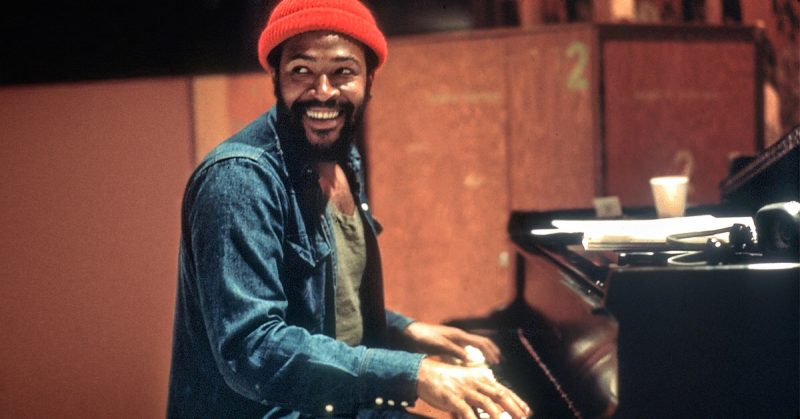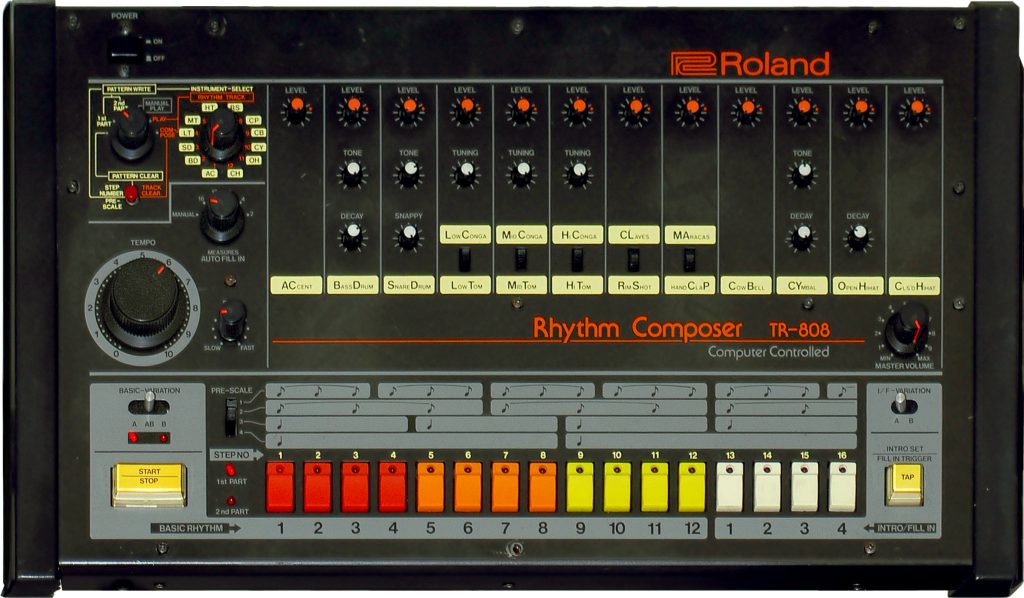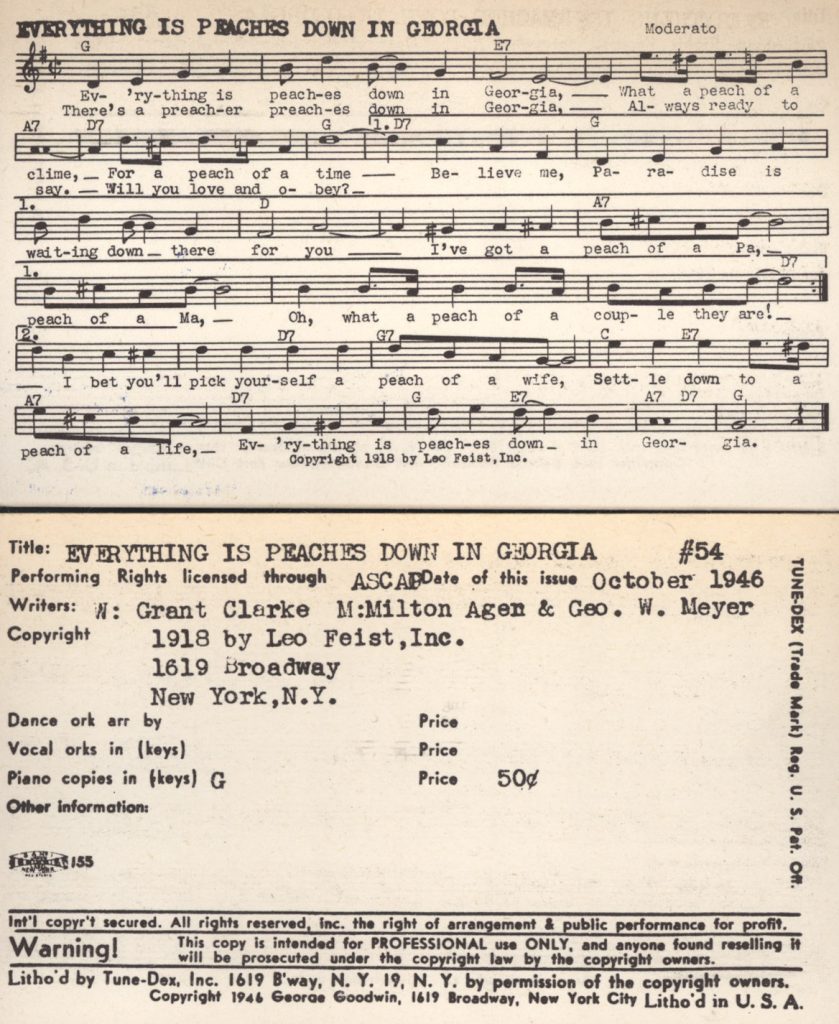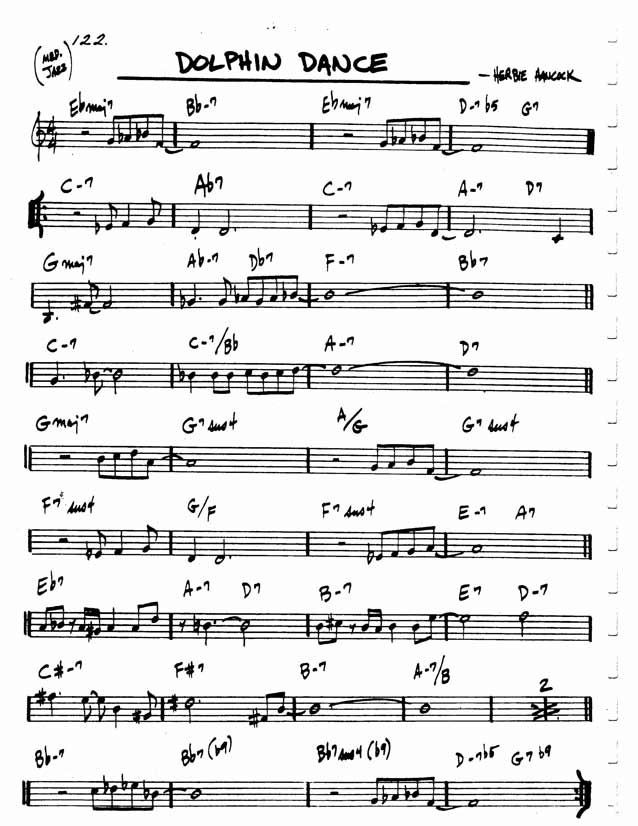That is often the question.

Do drum machines provide a source for “Sexual Healing”? Lets ask Marvin Gaye.

Do drum machines put you in a “Love Lockdown” or say “Welcome to Heartbreak”? Kanye West knows the answer.

Maybe drum machines will have you joining Whitney Houston in saying “I wanna Dance with somebody” or better yet, have you screaming “Yeah!” with Lil Jon and Usher.
In the tracks referenced above, there was one specific drum machine behind it all. The Roland TR-808 revolutionized the way music was created and heard. It provided a whole new interface for artists and producers to be creative. It brought forth an entire soundscape that did not exist prior to 1980 and revolutionized the way we hear rhythm and beats.

History of Roland
Ikutaro Kalehashi, aka Mr. K, was born in Osaka Japan in 1930. As a kid he studied mechanical engineering eventually working for a company called Ace Electronics. There he helped manufacture what were called “Combo Rhythm Units”. These were early drum machines programmed into organs providing the organist with a beat in the case of no other musicians present. Some of the earliest recordings of drum machines were from artists such as Sly and the Family Stone and Timmy Thomas utilizing these rhythm units. In continuing his interests of electronic musical instruments, Mr. K founded the Roland Corporation in 1972. https://www.theverge.com/2017/4/3/15162488/roland-tr-808-music-drum-machine-revolutionized-music
Like anything revolutionary or new, people didn’t understand the TR-808 when first released in 1980. However, the machine was unique to anything else on the market. The sounds produced were synthetic and not natural. They sounded as if from outer space or from the future. People were confused. https://www.theverge.com/2017/4/3/15162488/roland-tr-808-music-drum-machine-revolutionized-music
The New York Scene
In the underground scene of New York City, the sound was about mixing records and spinning vinyl in clubs. In 1981 the game was changed when one man introduces the 808 sounds to the world. Afrika Bambaatta was already mixing artists such as James Brown, Sly and the Family Stone, and Kraftwork together through being a dj, and with help of producer, Arthur Baker, the song “Planet Rock” was recorded for Tommy Boy records. Soon, the sounds of the 808 were being played throughout the New York Clubs. The most noticeable sound of the track was the low end of the bass. No one had ever heard a bass sound of that magnitude before the 808.
Sexual Healing
The next major event to occur in the life of the 808 is when Marvin Gaye chooses to make a career move. Struggling with happiness in his life, Gaye decides to move to Belgium and escape the struggles of family, drug abuse, as well as remove himself from the Motown sound. He went into the studio with a new, stripped down writing style, and a vision. With the 808, he created a groove and was adamant about that one sound. After recording his vocals over the 808 loop, Marvin Gaye transformed the 808 sound into his number one selling track of all time helping him receive his only ever Grammy Award. The track “Sexual Healing” helped bring the sounds of the 808 into the pop music world in 1982.

After the breach into the pop music world, the Roland TR-808 sound began to bridge the gap between multitudes of genres and city scenes from the Miami bass music scene, to Atlanta, New Orleans, Chicago and even across the seas to Europe. One of the most revolutionary producers to utilize the 808 is Rick Rubin, co-founder of Def Jam Records and co-president of Columbia records. Rubin is known for his discovery of using the 808 for a bass line. He found out a way to maximize the sustain sound and tune the pitches allowing for the creation of a bass line. Artists such as LL Cool J, The Beastie Boys, Run DMC, and Public Enemy can be attributed to the work of Rick Rubin and the 808. Rubin developed the sound of American hip hop with the help of the iconic drum machine. https://www.britannica.com/biography/Rick-Rubin
3 years of never ending influence
Between the year 1980 and 1983, Roland produced and sold 12,000 machines. The way the machine was developed, Mr. K, chose to utilize the defective transistors in the analog circuit because it created a unique buzzing sound. As technology improved, access to these specific transistors diminished. Rather than changing the formula, Mr. K. stopped all production of the TR-808. Even though only a limited amount were created, the Roland TR-808 changed music forever. As a listener you cannot turn on the radio without hearing a track consisting of 808 sounds or influence. Artist still use it today. https://www.rollingstone.com/music/music-news/8-ways-the-808-drum-machine-changed-pop-music-249148/
https://www.imdb.com/title/tt2268622/plotsummary?ref_=tt_ov_pl
Back to the original question…you could say maybe the faulty transistor is the soul within the 808 drum machine. Maybe it’s the soul within the artist or producer that shines through. All in all though, with the impact the 808 had on music it is easy to say, it has more soul than a ginger like me…











